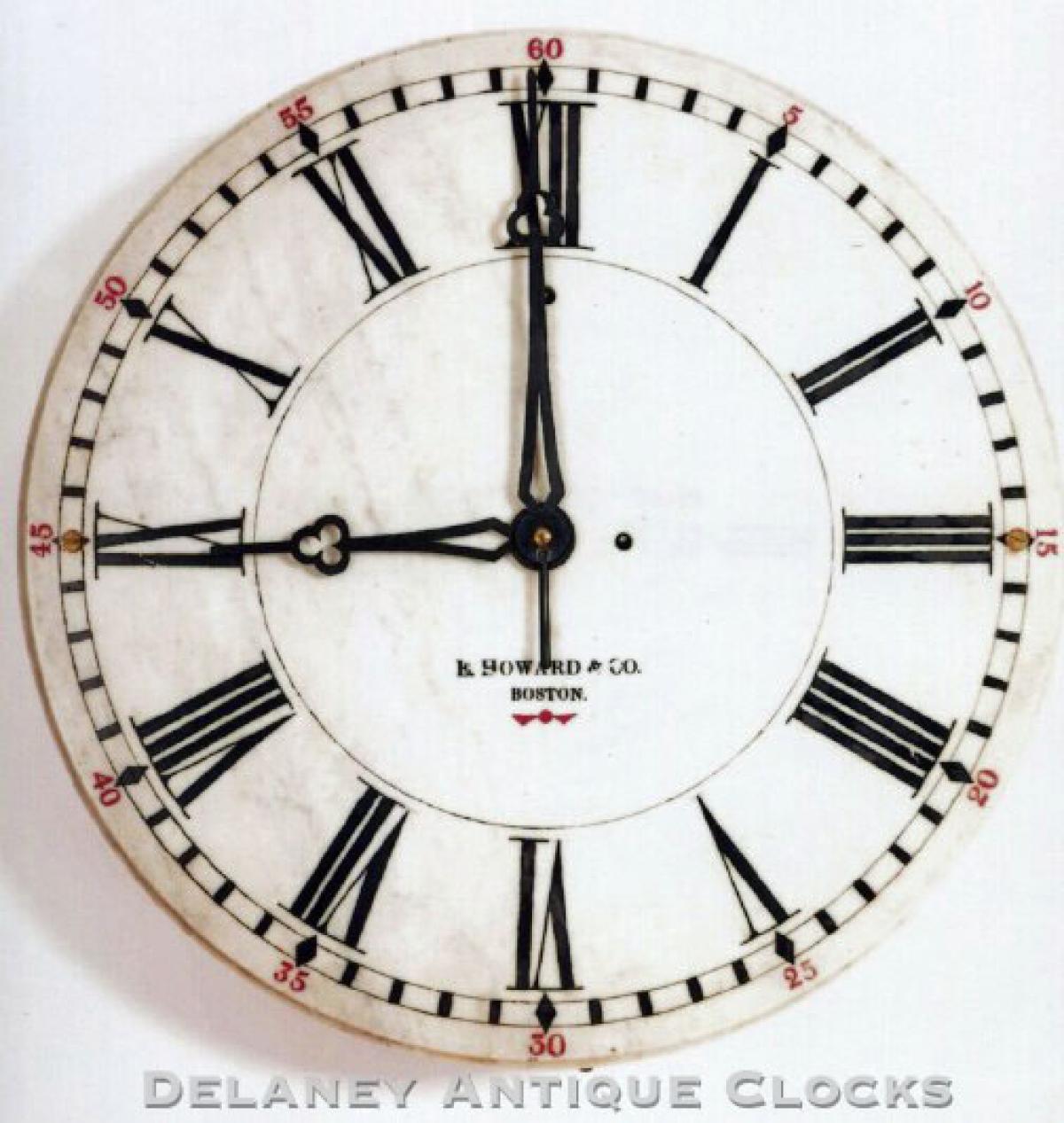E. Howard & Co. Model No. 21. Eight-day spring-powered movement. UU-62.
Marble-faced clocks were designed for libraries, churches, banking rooms, and other large interiors. The front of this case is a single piece of marble that measures a full 24 inches across and is approximately one-half of an inch thick. The dial is decorated with large Roman numerals and a minute ring painted black. The five-minute positions are labeled with red Arabic numerals. The addition of red is an excellent detail. The Maker's name is signed on the dial-in block lettering. This marble dial is mounted onto a circular-shaped pine case. The outside retains its original white-painted finish. The interior is finished in a natural color shellac. The large brass movement is spring-driven and of excellent quality. Typically, these clocks were constructed with weight power or secondary electric movements. The spring-powered option found in this clock was a special order. It is heavily built and features nickeled plates die-stamp with the Maker's name in the upper left corner, heavy posts, a recoil escapement, external rating adjustment that is accessible through the dial, and spring power, which is designed to last eight days on a full wind. The coil spring fitted to this movement is encased in a brass canister. The pendulum bob is zinc and covered in brass. The brass facing retains its original ring turn design. The bob is supported by a wooden rod.
This clock was made circa 1920.
This is a very unusual setup for a Howard. They made very few spring-driven clocks. The vast majority of their production is typically weight-driven.
The model No. 21 was offered in the catalog in several dial sizes. In inches, the catalog advertised mechanically operated clocks with dials measuring 24, 30, and 36 inches in diameter. A 12 and an 18-inch diameter model was also offered for those clocks with Electric motors.
Inventory number UU-62.
The E. Howard & Company succeeded the Howard & Davis firm in 1857. The Howard & Davis firm was comprised of Edward Howard and David Porter Davis and was established in 1842 in Roxbury, Massachusetts. Both men had just completed their clock apprenticeship under the guidance of Aaron Willard Jr in Boston. The Howard & Davis firm made high-grade clocks, precision balances, sewing machines, fire engines, and watches. After the dissolution of Howard & Davis, Edward Howard became Boston's leading manufacturer of weight-driven residential and commercial clocks. The firm also made a large number of tower clocks and watchman and salve clock systems. These sold well in the last quarter of the 1800s.
It has been said that the E. Howard Clock company never made an inexpensive clock, and everything they made was of very good quality. As a result, Howard clocks have become very collectible and are prized by their owners. Today, the E. Howard name enjoys outstanding name recognition.
For a more in-depth reading of Edward Howard and his various businesses, please read "Willard's Patent Time Pieces," written by Paul Foley.










